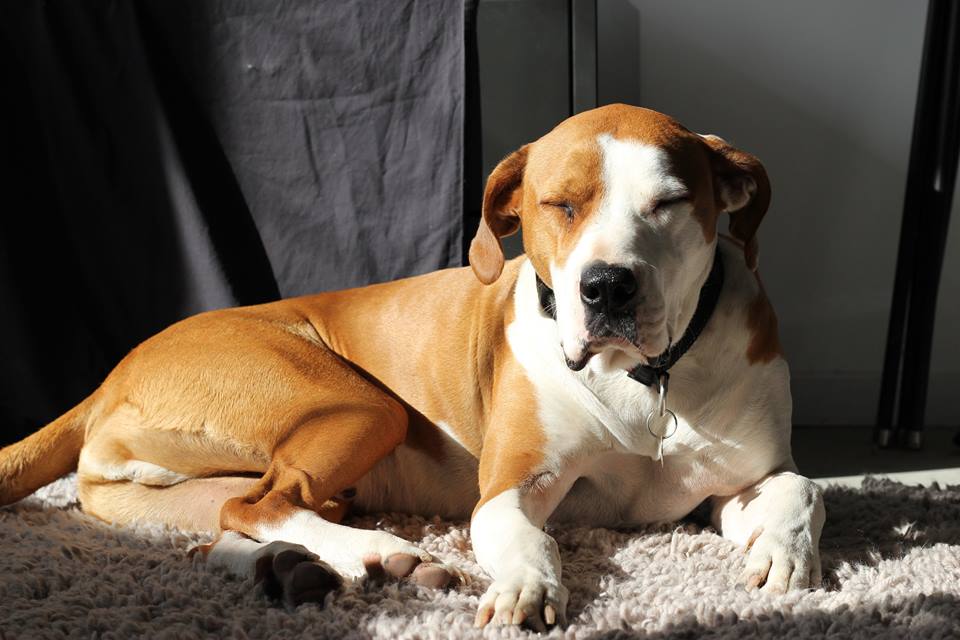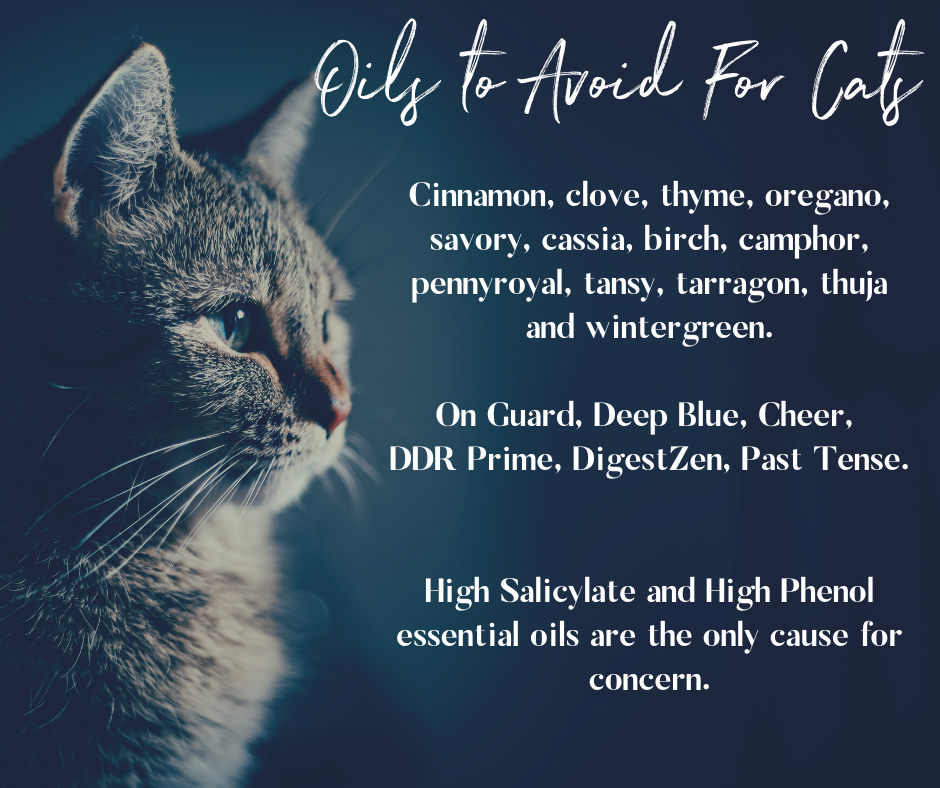We’ve all seen the alarmist posts about the apparent dangers of diffusing Tea Tree making beloved pets unwell doing the rounds on the web. It’s time we break this story down to the facts and stop the perpetuation of this issue which as you’ll see stems from misuse of essential oils.
The first thing I want to point out is that I am a massive dog lover. The last thing I want to hear of happening is someones dog (or cat) becoming unwell through the use of essential oils.
I have been using my oils (doTerra only) on and around my English Pointer X Bull Arab Sumo for a good five years now and not once have we had a negative experience. That includes the use of diluted Tea Tree on him when needed. Usually on a broken nail that he’s ripped off whilst galloping around the back yard chasing birds.

Personally I do not enjoy the medicinal, First Aid Kit smell that Tea Tree reminds me of. I’ve never chosen to diffuse Tea Tree around the home and I honestly question why anyone would decide to diffuse Tea Tree on it’s own for enjoyment when there are dozens of other incredible aromas to choose from …..you are strange people!
Ok let’s get stuck into it……..this is long. I’m sorry but it needs to be thorough.
There are numerous essential oil companies around the world with several million customers each (doTerra alone has 8 million customers at the time of writing). All of those members are using essential oils (of varying quality) on a regular basis in their home. 62% of all homes in Australia have pets… don’t you think we would have reports of pets dropping dead all over the world if essential oils were truly as toxic as those emotionally driven articles imply.
The way I look at it is there is actually an amazing level of safety when it comes to essential oil use being witnessed as a whole. Here we have millions of people using essential oils to clean their homes, freshen the air and transition away from PROVEN carcinogenic and neurotoxic conventional household products with vary few cases of adverse reactions.
Cleaning products with ingredients such as bleach, ammonia, chlorine, glycol ethers or formaldehyde can put pets at risk for cancer, anemia, liver and kidney damage. Yet we’re not discussing the safety of those products are we and the fact our pets are absorbing them each and every day …… Huston we have a HUGE problem.
The evidence shows that in the absence of gross misuse (and I do mean gross!), lack of common sense and overdose of essential oils, they really are very safe for our pets.
Of course it matters what quality of essential oil is used. Synthetics or adulterated essential oils should never be lumped in the same category with true essential oils. Unfortunately that distinction is never made in these inflammatory articles which go viral. Fragrance grade essential oils are not even close to pure therapeutic essential oils such as doTerra’s which are used by Medical Professionals, Hospitals and Research Facilities the world over. You need to be absolutely certain of what ingredients are contained within your bottles folks, otherwise how can you ascertain what the outcome will be?
Ok, back to tea tree. It all stems from these couple of studies…….
In January 2014 The Journal of the American Veterinary Medical Association published a study titled “Concentrated tea tree oil toxicosis in dogs and cats”.
This paper took all of the toxic exposures to Tea Tree that were reported to the Animal Poison Control Center of dogs and cats over a 10 year period throughout the US and Canada. They analysed 443 cases – recorded over 10 years.
To put that into a little bit of perspective, it’s estimated that 24 million pets are owned in Australia alone. Granted, not everyone uses essential oils. The brands of the essential oils that caused toxicity were not disclosed in this study which would have been helpful.
“The amount of oil that caused toxicity was dose dependent” as stated in the conclusion. In other words, the larger the dose the more severe the toxicosis symptoms were. Not surprised in the least. The toxic dosage for pets ranged from 0.1 mL to 85 mL – in terms of standard sized essential oil bottles, that is 5 drops to over 5 BOTTLES worth of essential oil.
Two dogs were reported with applications that resulted in death – one was accidentally given 0.4 mL of this essential oil via IV which is about 20 drops. The other was given 28.5 mL (that’s a little less than 2 FULL bottles) topically for 3 days straight.” Bloody hell, who are these people??
Then there was the case of three cats who received dermal application of approximately 120 ml of undiluted Tea Tree to shaved but intact skin which resulted in symptoms of hypothermia, uncoordination, dehydration, and trembling and in the death of one of the cats. The other two recovered within 48 hours. That’s 40ml of Tea Tree essential oil undiluted per cat or the equivalent of 2.5 FULL BOTTLES per cat.
Those cats were the subject of gross misuse and overdose.
It’s worth pointing out here that essential oils may also be absorbed quite differently in cats VS dogs when using topical application because the skin of cats appears to be thinner than that of the dogs skin. Dilution and appropriate dose is absolutely imperative because of this.
Citrus essential oils are also commonly referred to as toxic in these viral facebook posts. Let’s just touch on this quickly –
In actuality it is pretty difficult to find cases of citrus toxicity in cats. The main toxicity report regarding felines was for the isolated compound d-limonene found in all citrus essential oils. A PubMed search for “limonene toxicity feline” – sees only three articles listed. One of these articles focused on the toxicity of d-limonene against the cat FLEA, and not actually as toxic to a cat. The other two articles (from 1986 and 1988) related to an insecticidal spray or dip containing d-limonene being applied to cats in high concentrations.
From “Effects of an insecticidal dip containing d-limonene in the cat” Journal of the American Veterinary Medical Association, 1986 – the following abstract is quoted:
“A study was undertaken to determine the effects of a single dermal application of a commercial insecticidal dip containing 78.2% d-limonene in cats. At the manufacturer’s recommended concentration of 1.5 oz/gal of water, no clinical signs or lesions of toxicosis were seen. At 5 times the recommended concentration, clinical signs were mild and consisted of hypersalivation of short duration, ataxia, and muscle tremors resembling shivering. At 15 times the recommended concentration, clinical signs included hypersalivation lasting 15 to 30 minutes, moderate-to-severe ataxia lasting 1 to 5 hours, muscle tremors resembling shivering lasting 1 to 4 hours, and severe hypothermia beginning soon after treatment and lasting 5 hours. No deaths or other lasting effects were seen at any dosage.”
In general, all cases reported of citrus oil toxicity in cats involved topical application at 5-10 times the normal/ safe concentrations.
Can cats metabolise essential oils?
Yes, they can though they do lack a particular liver enzyme (UDP-glucuronosyltransferase (UGT) enzymes) which is important in the metabolism process. Metabolising phenolic compounds (think essential oils of clove, cassia, cinnamon, oregano, thyme all of which are rich in Phenols) is very difficult for cats because of this. This doesn’t mean they can’t metabolise, it means the metabolic processing time is slower.
Cats have a super slow processing and elimination time for certain drugs/compounds vs other animals and this is where overdose can be an issue. Ponies have a 1 hour half-life, a dog has a 9 hour half life and a cat, well it takes a cat up to 38 hours to eliminate a drug depending on the compound.
In a 1984 edition of Veterinary Clinics of North America Journal: Small Animal Practice, there is this profound statement by Jeff R. Wilcke DVM, MS who said “Even drugs known for toxicity in cats can be used safely if we are aware of and compensate for certain peculiarities.” Bingo.When it comes to diffusing oils around your pets and cats, it is safe to do so as long as you employ common sense.
Running your diffuser all day in a space that is not well ventilated and that your pet cannot escape from is misuse. Let alone leaving the house with a diffuser running with tea tree in it AND your pet inside unable to escape even if they wanted to. Come on guys, wisen up.
Otherwise, the small amount of essential oil vapour that is diffused into the air from a diffuser is so small that the risk to cats and dogs is unlikely. Robert Tisserand reminds us that a few parts per million of aromatic vapour from those 3-5 drops of essential oil is not likely to be harmful as it’s more a question of overall exposure levels.
Common sense prevails and the dose makes the poison folks so please follow these precautions to ensure happy and safe pets when using your oils around them –
1. You just don’t go giving pets ridiculous amounts of oils in any capacity. If you accidentally tip a whole bottle of tea tree in a bath for your dog or cat. Do not use that bath! Start again.
2. When diffusing – Always leave a window/ door open for airflow and allowing an escape for your pet. Always have your timer set for 20 minute intervals. Running a diffuser all day isn’t recommended for pet owners. Instead use a 20 minutes on and 20 minutes off approach.
3. Only ever use a trusted and pure brand of essential oil such as doTerra. I cannot stress this enough. If your oil has adulterants or additives in it such as solvents or alcohol you have zero safety guarantees.
4. If in doubt or uncertain with using Tea Tree, no problem! Try using Arborvitea or Geranium instead which are great alternatives.
5. Don’t ever use essential oils undiluted on your pet.
6. When applying an oil topically to your pet, avoid applying to an area where they will lick it off OR cover that area up to prevent them doing so. This is especially important for cats.
7. Let your pets behavior and body language guide you!
And if that doesn’t make you feel any better, Tisserand himself (considered by many as the Godfather of essential oils) has had very long lived cats on whom he has used Tea Tree topically when required without any ill effects.
In my own essential oil community, we have Veterinarians who are trained in Pet Aromatherapy and are very content using Tea Tree on and around animals without ill effect. Dr Janet Roark of the Essential Oil Vet is another fantastic resource for all things essential oil use around pets.
The Aromatherapy Trade Council is satisfied essential oils are safe to use around pets however it does state that ‘if used inappropriately or over long periods they could have fatal consequences’. Makes perfect sense!

The list of oils to avoid for pets is actually very small –
Cinnamon, clove, thyme, oregano, savory, and cassia are your high phenol content oils. Birch, camphor, pennyroyal, tansy, tarragon, thuja and wintergreen should also be avoided. This includes blends that contain those essential oils.
Here are some great, safe recommendations for your dogs and cats to try –
Oils for Skin Irritations: Copaiba, Lavender, Roman Chamomile, Helichrysum, Cedarwood, Myrhh, Geranium.
Digestive Complaints: Ginger, Lemongrass, DigestZen (dogs only), Lavender, Fennel, Turmeric.
Fleas/Ticks: Terrashield Blend, Arborvitea, Cedarwood.
Joint Discomfort: Copaiba, Turmeric, Ginger, Lemongrass, Frankincense.
Anxiousness: Copaiba, Balance, Lavender, Frankincense, Cedarwood, Vetiver.
I hope that this helps all the pet lovers out there feel safe and confident to use your oils including Tea Tree around your pets!!
Please remember that I am not a vet and cannot advise on individual cases. I am simply an avid researcher who employs common sense and encourages you to do the same.
Also take this away with you – personal experience always trumps media paranoia and please, view every highly inflammatory article or social media post with a critical eye.
x Bec



0 Comments